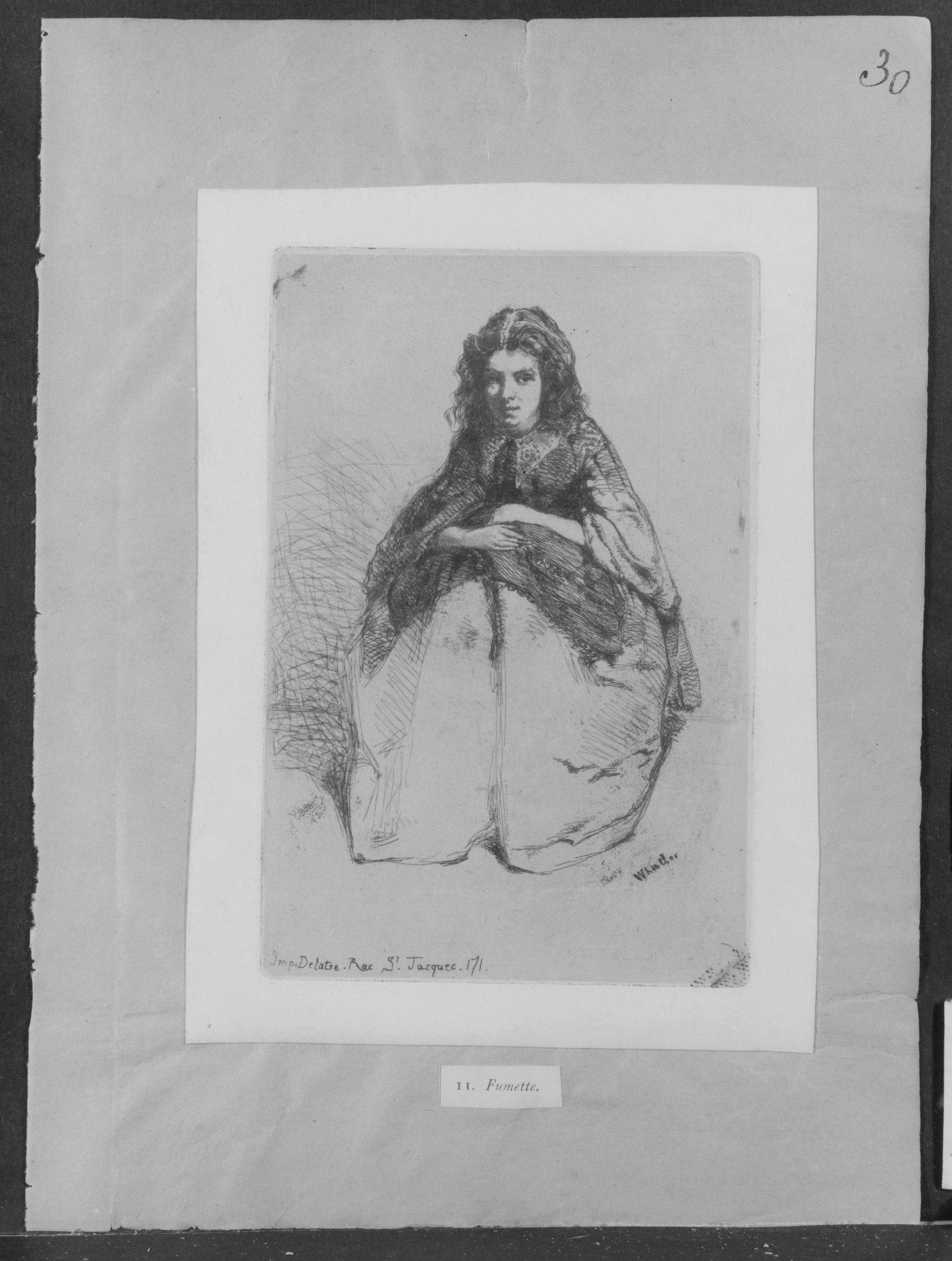Fumette
James McNeill Whistler American
Not on view
Whistler's mistress Heloise was nicknamed Fumette for her quick temper. Thought to be a gypsy, she worked as a milliner in the Latin Quarter of Paris and lived with the artist for two years. Her bohemian character is suggested here by hair worn loose, in defiance of convention, and crouching pose. Sympathetic to realist and naturalist ideas current in France, the artist avoided idealization or suggestions of universal meaning. Seymour Haden later recorded that Whistler etched the image before leaving for a tour of the Rhineland in mid-August 1868. After his October return, impressions were pulled for publication a month later in "Douze eau-fortes d'apres Nature" ("Twelve Etchings from Nature," known as the "French Set"). Evidently pleased with the print, the artist sent an impression to the Paris Salon of 1859. This impression belonged to Thomas Winans, a Baltimore friend who financed the artist's move to Paris in 1855; Winans kept the print in an album that descendants gave to the Museum.
Due to rights restrictions, this image cannot be enlarged, viewed at full screen, or downloaded.
This artwork is meant to be viewed from right to left. Scroll left to view more.




